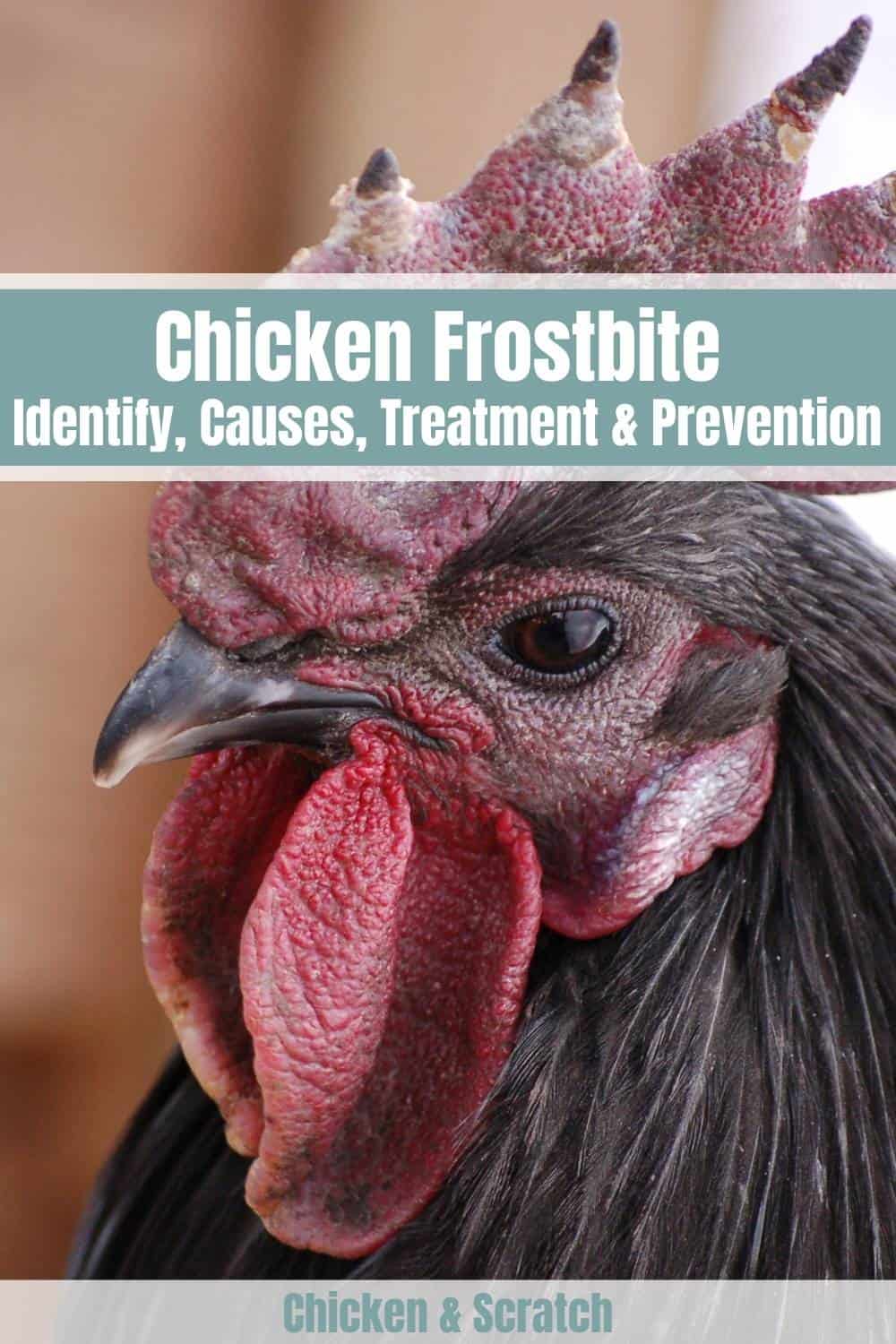Frostbite does a lot of damage to your chickens’ bodies, so you need to watch out for them in your flock. For instance, in extreme cases, some parts of your chickens’ bodies might fall off. You need to know how to identify, prevent and treat frostbites in your flock. Don’t wait until you see signs of frostbite before you take action.
This article will cover
- What Is Chicken Frostbite?
- 4 Causes Of Frostbites
- Can Frostbite Be Treated?
- 5 Ways To Prevent Frostbite In Your Flock
What Is Chicken Frostbite?
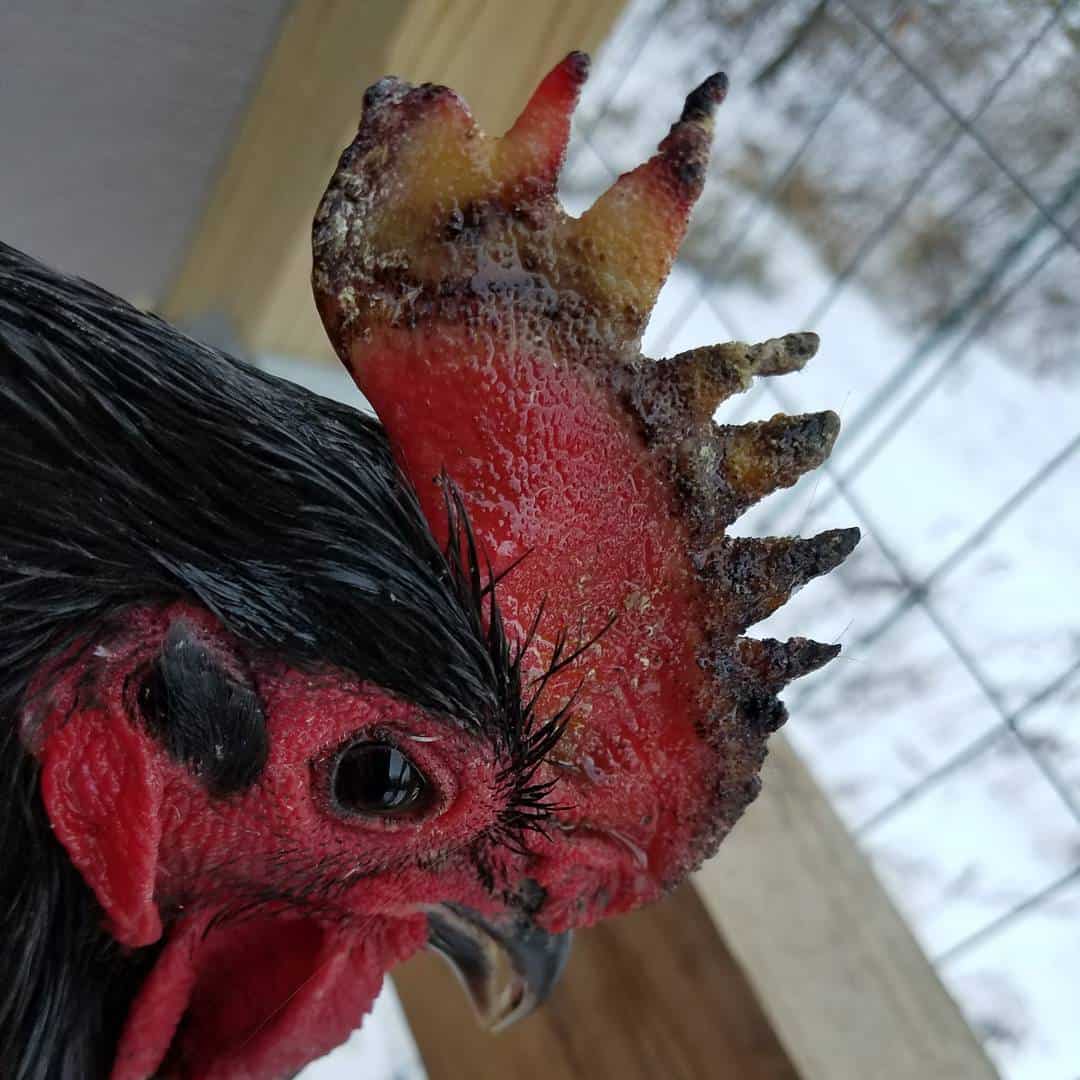
Chicken frostbites are injuries chickens suffer due to the freezing of their tissues and skins. It usually happens during winter, and the affected parts are often the comb, feet, and wattles.
As such, you have to be on the alert to deal with any symptoms of frostbite in your flock. However, even though frostbite affects all chicken breeds, some breeds are more susceptible than others. It is rare among chicken breeds whose combs are walnut, rose, or pea-shaped.
Identifying Frostbite
To know how to prevent or treat frostbite, you must first learn how to identify it. Identifying frostbite in your flock isn’t difficult to do. Below are some signs of frostbite.
Color changes
The color of the affected parts changes. The affected parts are usually body parts with no feathers, which are exposed to weather elements. This is why the comb, feet, and wattles are generally affected by frostbite.
In frostbite cases, more blood circulates in the vital parts at the expense of the exposed parts, making these parts less warm and paler. With time, swelling occurs, and the affected parts become brittle.
Unease
Another way to spot frostbite in your flock is to look out for signs of unease. For instance, your chickens are likely to limp if their feet have been frostbitten. Sometimes, they eat less than they usually do or lie in a place most of the day.
Effects of frostbite
Frostbite effects in chickens can either be minor or severe. In minor cases, the skin of the affected parts is slightly irritated. For example, if the comb is affected, you’ll notice a change of color, such as white tissues on it.
In some cases, you’ll find blisters on the affected parts. You should do all you can to ensure frostbite cases don’t become severe. If they do, the effects are often permanent tissue damage to your chickens, such as the affected parts falling off and being exposed to gangrene.
In addition, your chickens become susceptible to frostbite recurrences and decreased blood circulation in their bodies. Both short-term and long-term effects of frostbite don’t enhance your chickens’ health; therefore, you must actively protect your chickens from it.
4 Causes Of Frostbites
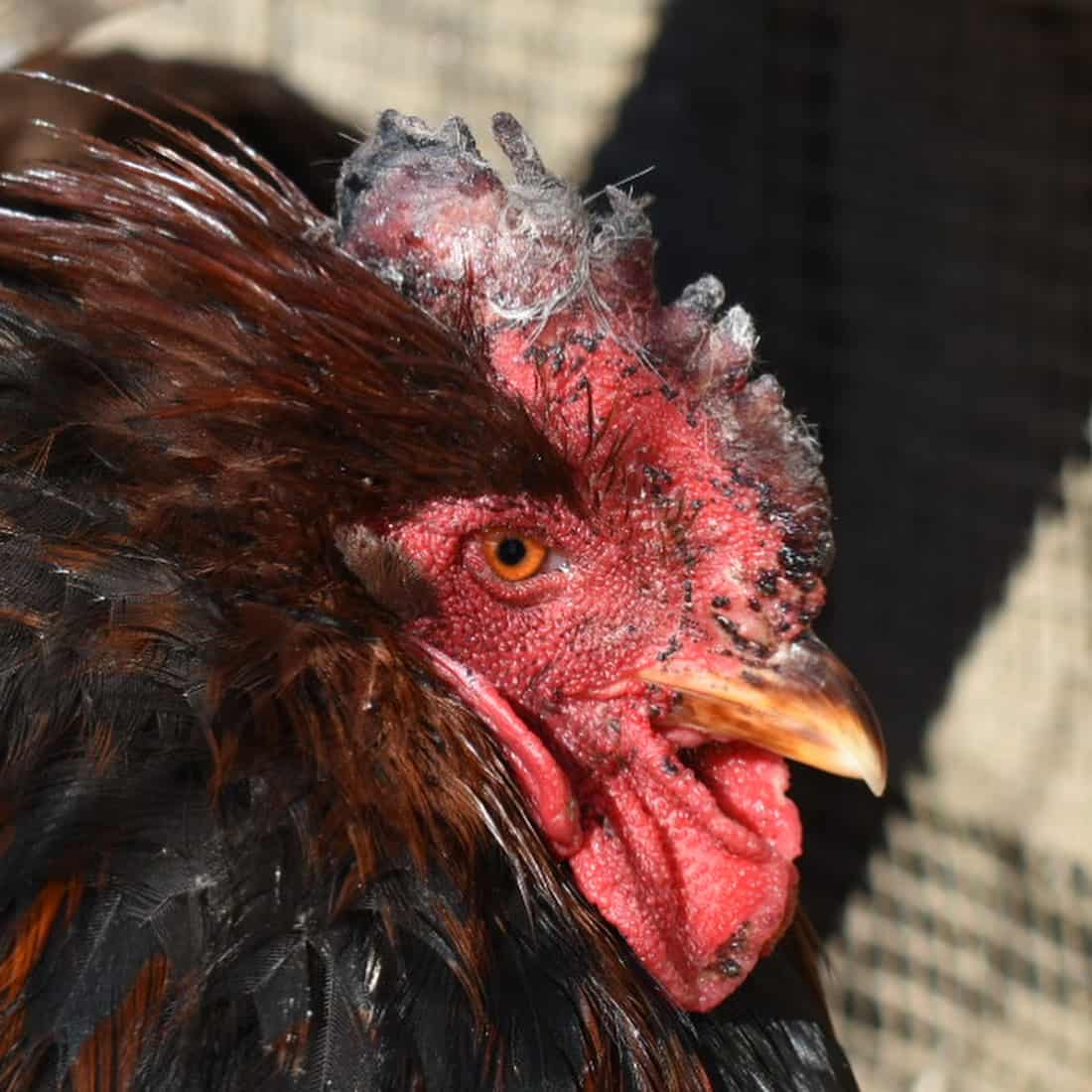
Even though frostbites usually happen during winter, low temperature isn’t the only cause of frostbite. Chickens can cope with cold under the right circumstances, especially if they are hardy breeds. Below are some of the reasons for chicken frostbites.
Moisture
Chickens and moisture aren’t friends. While it’s essential to keep your chickens hydrated, try as much as possible to protect them from moisture. When the freezing air mixes with moisture, the effects are devastating for your chickens.
It can damage your chickens’ lungs and lead to frostbites. Therefore, you should ensure that there’s no form of moisture in their coop. Look out for condensation when you heat the coop during winter and take necessary action before it becomes a cause of concern. Also, their coop should be adequately ventilated to prevent moisture from storing up.
Non-fluffing up of feathers
During cold seasons, chickens keep themselves warm by fluffing up their feathers. They also use their feathers to cover up their feet. It’s common to find your chickens huddled together too. You shouldn’t stop them from doing this.
At the same time, don’t wear any piece of clothing on your chickens during cold seasons. It’ll prevent them from generating the heat they need to keep themselves warm, thereby increasing the likelihood of frostbites.
Exposure to cold
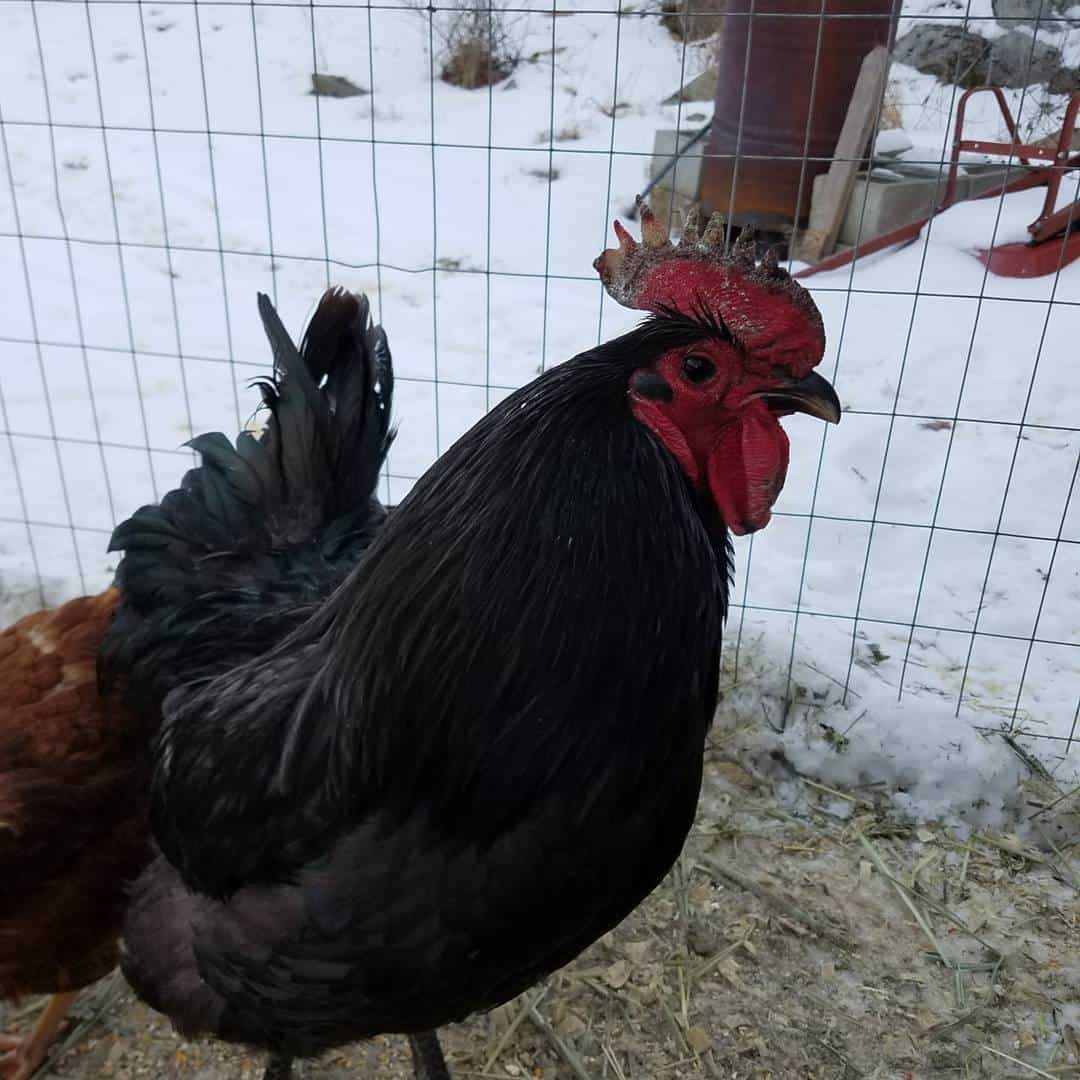
You shouldn’t expose your chickens to cold. Cold seasons aren’t the time to allow them to forage for long or beyond your sight. The more their exposure to colds, the higher the chances of them getting frostbitten. Keep your chickens in a dry and warm place and always provide them food and water to reduce foraging.
Chicken breed
No chicken breed is immune to frostbite. However, some are more sensitive to it than others. For example, chicken breeds with single, large combs such as standard-sized chickens, feather-footed chickens, etc., are more prone to frostbites.
If you don’t want to deal with frostbite cases in your flock often, you should go for hardy chicken breeds such as Rhode Island Reds, Wyandottes, Barred Rocks, Salmon Faverolles, etc. Cold-hardy chickens are usually small with rose, pea, or walnut-shaped combs and are best for regions with low temperatures.
Can Frostbite Be Treated?
It’s not the end if your chickens get infected with frostbite. You can treat it, but your chickens might not recover from it immediately. You have to be patient and consistent with treating the affected chicken. The first step in treating frostbite is to identify the extent of its effects on your chickens.
For instance, severe frostbite cases such as permanent tissue damage will require intense treatment than mild cases of swelling and irritation. Besides, don’t neglect frostbite cases in your flock because they never go away by themselves. Below is a guide on how to treat frostbite.
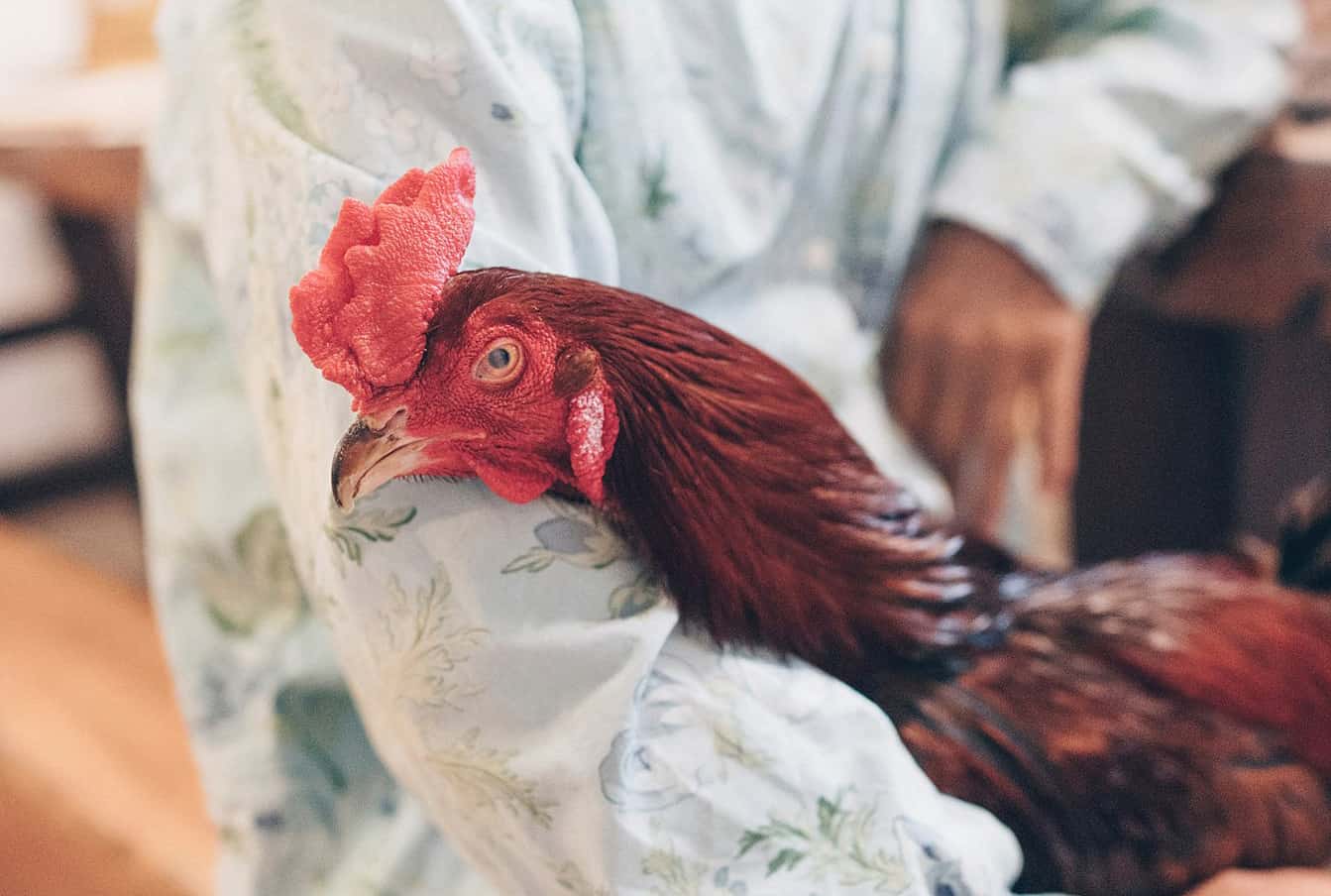
Wash the affected areas
Closely inspect your chickens for signs of frostbite. Sometimes, in the early stages, frostbite might be challenging to detect. You might have to rely on the chicken’s performance to judge. Once you’ve identified the affected parts, wash them with lukewarm water and Epsom salt and dry with a towel. Separate the affected chicken from other chickens and put it in a cool, dry place.
Cut off the infected parts
After washing and drying the affected body parts, apply an antibiotic on it. If the case isn’t severe, the flesh should heal in two weeks. If it doesn’t, this means the flesh has been infected and should be removed.
You can do this yourself or hire a vet doctor. If you’re doing it yourself, ensure all the instruments you use are sterilized so as not to worsen your chicken’s situation. Also, only remove the affected part and apply some antibiotics after you’re done. You can return the chicken to the flock except if it’s still bleeding or needs more care.
Make the chicken comfortable
You have to monitor the affected chicken if you don’t want to lose it. Ensure it’s comfortable as much as possible. Keep the chicken indoors and warm until it has fully recovered. You can supplement the heat in the chicken’s cage.
Also, good nutrition is essential at this moment. Feed your bird with the right diet and treatment to enhance swift recovery. Continue the treatment until all traces of frostbite are gone. In severe cases, you can consult a vet.
5 Ways To Prevent Frostbite In Your Flock

The best way to treat frostbite is to prevent your flock from getting it. With suitable measures in place, you won’t have to deal with frostbite cases. Some of the things you can do to prevent frostbite include :
Dry beddings
Your chickens’ bedding should always be dry during cold seasons. Wet beddings only add to the atmosphere’s moisture, which isn’t suitable for your chickens. Replace all wet beddings with dry ones instantly. Also, don’t let your chickens sleep on the cold, hard floor. Protect their health and make them comfortable.
Ventilation and insulation
Ensure the coop is adequately ventilated and insulated. The coop should have vents that allow moisture to escape and air to flow in. Water not only causes frostbite in your flock but other deadly diseases as well.
Ventilation will dissolve condensation in the coop. You should note that ventilation is different from opening the coop. Ventilation allows air in without causing a draft, while opening the coop in cold seasons makes it drafty. Check for holes in the cell where moisture can pass through and close them up.
Heat
Heating the coop is another way to prevent frostbite, but you must be careful about it. Heat condenses and becomes moisture, which isn’t favorable to your chickens’ health.
If you must supplement the natural heat your chickens are getting, hire a professional to do it for you if you’re not sure of yourself. Be careful of fire outbreaks and stop the heating as soon as the temperature becomes more favorable.
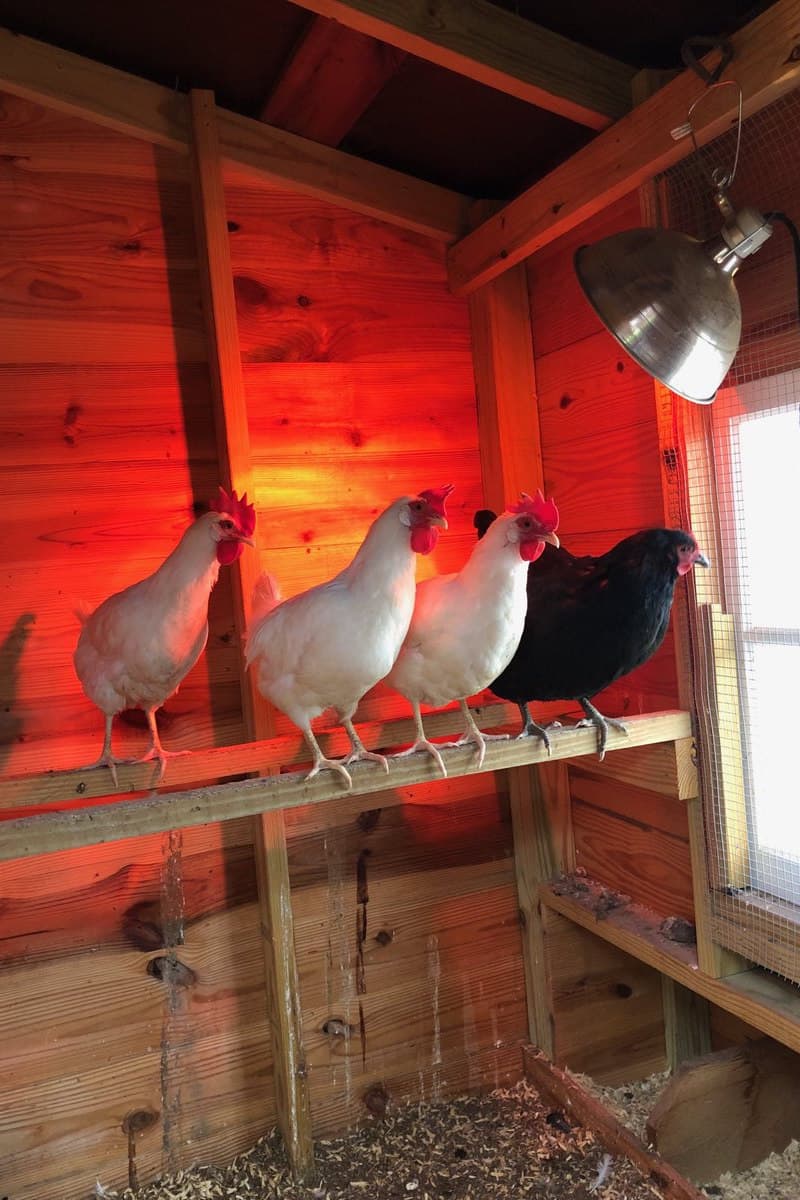
Coop flooring
Usually, your coop’s flooring shouldn’t contain moisture. Damp conditions aggravate your chickens’ health. For instance, a cemented floor is more suitable than a coop’s flooring because it won’t get soggy, compared to a wooden floor which gets damp often and starts to breed viruses. Since your chickens often come in contact with the ground, ensure the ground is always dry.
Cold-hardy breed
If you want to prevent frostbite in your flock, breed only chickens that can fare well in cold climates. This way, you won’t have to do much as the chickens are biologically programmed to withstand cold temperatures. If your region has both hot and cold temperatures at different intervals, choose chicken breeds that fare well in both seasons.
Summary
Your chickens don’t have to fall victim to frostbite before you take action; prevention is the most efficient way in dealing with frostbite cases, and it starts with knowing the causes and signs of frostbite. However, if your chickens get frostbitten, ensure you get them the right treatment. Keep in mind that mild cases will heal quickly while severe cases need medical intervention.


Joseph Hudson has been raising chickens for over 15 years. In 2018, he completed the Agriculture & Natural Resources program at Mt. San Antonio College. He currently raises over 1400 chickens on his 7.5-hectare farm. He keeps sharing his experience on raising healthy and happy chickens on Chicken Scratch The Foundry.
